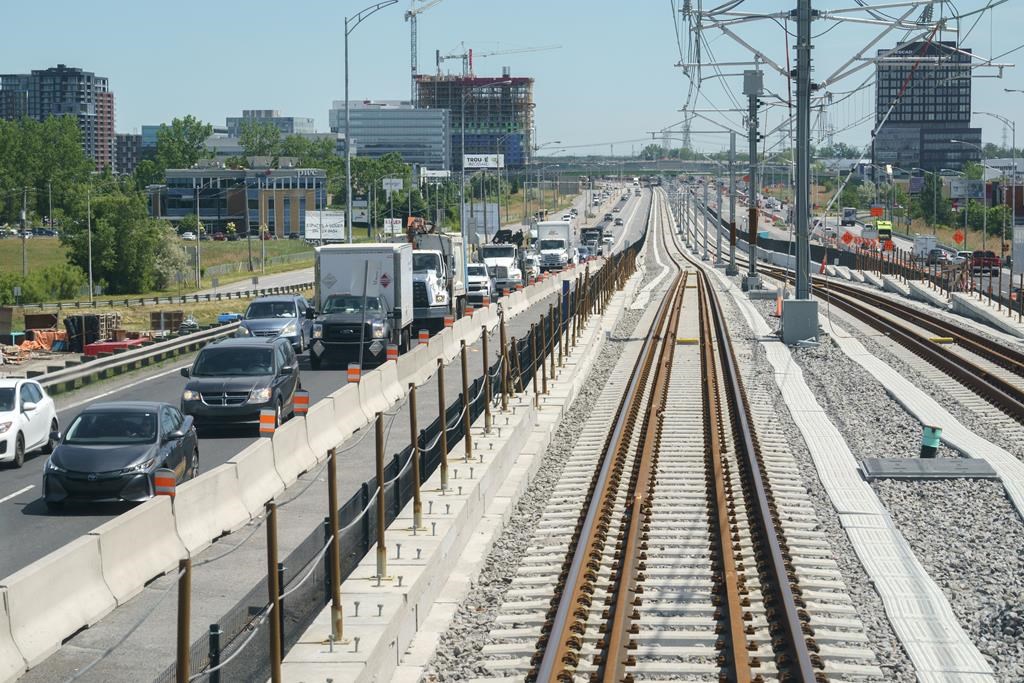Infra
Campaign on deadly danger posed by REM tracks | CityNews Montreal

“This is a matter of life and death. Do not travel on the REM route.” This is the message that the Caisse de dépôt et placement du Québec (CDPQ) wants to send with its new awareness campaign launched on Monday.
While dynamic tests soon beginning on the section of the Réseau express métropolitain (REM) linking Deux-Montagnes to Laval and Montreal, CDPQ Infra wanted to remind people of the dangers faced by those who attempt to go beyond the fences to cross the tracks or come and commit misdeeds there.
With the line closed since 2021 to be redeveloped for the deployment of the REM, CDPQ Infra has noted that some people have developed bad habits and regularly go to the tracks.
“We have noticed several intrusions in recent months,” reports Francis Labbé, spokesperson for REM at CDPQ Infra. In some cases, people come to commit mischief, like to create graffiti for example, sometimes it is simply to save time.”
In all cases, these people risk their lives, underlines the spokesperson.
The first risk is of course that of being hit by a train, he explains. While the trains which ran on the old “Deux-Montagnes line” left every 20 minutes, with the dynamic tests which will begin on June 25, the new REM trains will leave every seven minutes on this section.
Elsewhere, such as in the Saint-Laurent sector, they will even pass every three minutes during rush hours.
“We are multiplying the number of trains passing by hundreds and that means there is a risk of being hit if someone ever crosses our facilities,” summarizes Labbé.
This is also the reason why the entire line is now protected by fences.
High electrical voltage
The other risk is that linked to the electrification of the line and therefore to the presence of catenaries, very dangerous high-voltage electrical cables.
For comparison, while the electrical current in a house is 120 volts, the Hydro-Québec distribution network generally operates at a voltage of 25,000 volts.
“The rule is very simple, it is to keep a distance of three meters from electrical conductors,” explains Hydro-Québec spokesperson Maxence Huard-Lefebvre.
“If we approach closer than three meters, there is a risk of being electrified or electrocuted by the electric current without even touching the wires or the electrical equipment,” he adds, making reference to the electric arc phenomenon which can occur when a person enters this type of infrastructure.
Talk to young people
The CDPQ Infra campaign is aimed at everyone and the safety instructions it wishes to remind do not only apply to the Deux-Montagnes section, but to the entire REM.
It will thus be widely deployed across the region, in particular with posters in bus shelters in areas close to REM lines. Thanks to geolocation, around the REM, banners will also appear on the smartphones of people who consult, for example, the sites or applications of several media.
But the campaign also intends to particularly target young people who are at risk of trespassing on the tracks, underlines Labbé.
“We wanted to send very clear messages, and it is aimed a lot at young people,” he says. For example: “To save five minutes, would you spend five months in a coma?” Or, for those who would be tempted to make graffiti, “To make a graffiti of death, would you be willing to lose your life?”
In partnership with Urbania and an influencer, CDPQ Infra will also broadcast its awareness messages on TikTok, the social network being particularly popular with young people.
–This report by La Presse Canadienne was translated by CityNews










